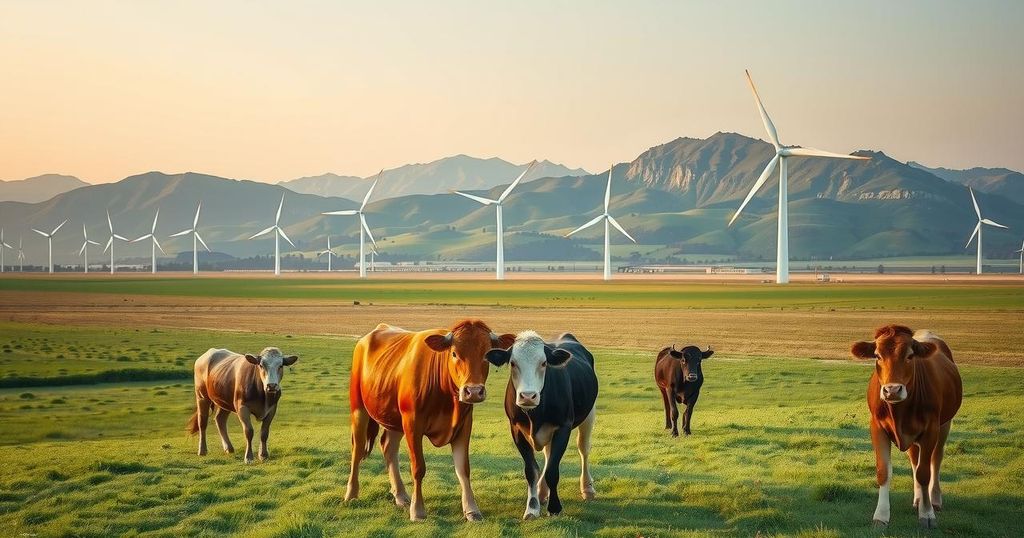Argentina has lifted a ban on live cattle exports, enhancing competition in its cattle industry. President Javier Milei announced that 70% of these exports will go to China, while the U.S. faces reduced cattle inventories and higher beef prices. The USDA reports a continued strong demand for Argentine beef in the U.S., further complicating the landscape for American cattle farmers.
In a significant shift in trade relations, Argentina will now permit exports of live cattle for slaughter, a decision announced by President Javier Milei. This marks the end of a 52-year prohibition, aiming to enhance competition in the meat and livestock sector. According to government sources, around 29.4% of Argentina’s beef production for 2024 will be exported to various international markets, expanding from 42 the previous year to 53 current markets.
China is set to purchase nearly 70% of Argentina’s beef exports, with other significant buyers including the European Union, Israel, and the United States. In 2024, Argentina’s beef export volume rose by 10%, reaching over 935,000 metric tons—the highest volume since 1924. Meanwhile, the U.S. beef exports stood at 1.29 million metric tons, primarily driven by demand from South Korea.
The USDA reports that although China will remain the primary destination for Argentine beef based on volume, exports to the U.S. are projected to remain robust due to increasing import demand and Argentina’s favorable pricing. As of late February 2025, retail prices for Argentine beef ranged from $2.19 to $3.11 per pound, significantly lower than the U.S. average of $5.55 per pound.
The disparity in beef pricing between the U.S. and Argentina can be attributed to the reduction in herd sizes among American farmers due to rising operational costs and a shrinking livestock inventory. Recent data indicate that U.S. cattle numbers are at their lowest level since 1951, with only 87.2 million head recorded as of January 1, 2024. This represents a 2% decrease from the previous year, compounded by an additional 1% drop the following year.
Additionally, there have been significant employment reductions within the USDA, notably due to actions by Elon Musk’s DOGE initiative, which reportedly terminated around 4,200 positions since the second Trump administration began. In a recent event at CPAC, President Milei presented Musk with a ceremonial chainsaw, symbolizing the cuts in federal workforce.
In conclusion, Argentina’s decision to allow live cattle exports marks a pivotal development in its agricultural policies, aimed at enhancing market competition and boosting international trade. With China as the primary buyer of Argentine beef, U.S. farmers face challenges due to dwindling inventories and higher prices. The ongoing shifts in trade and cattle inventory will significantly impact both countries’ agricultural futures.
Original Source: www.newsbreak.com




